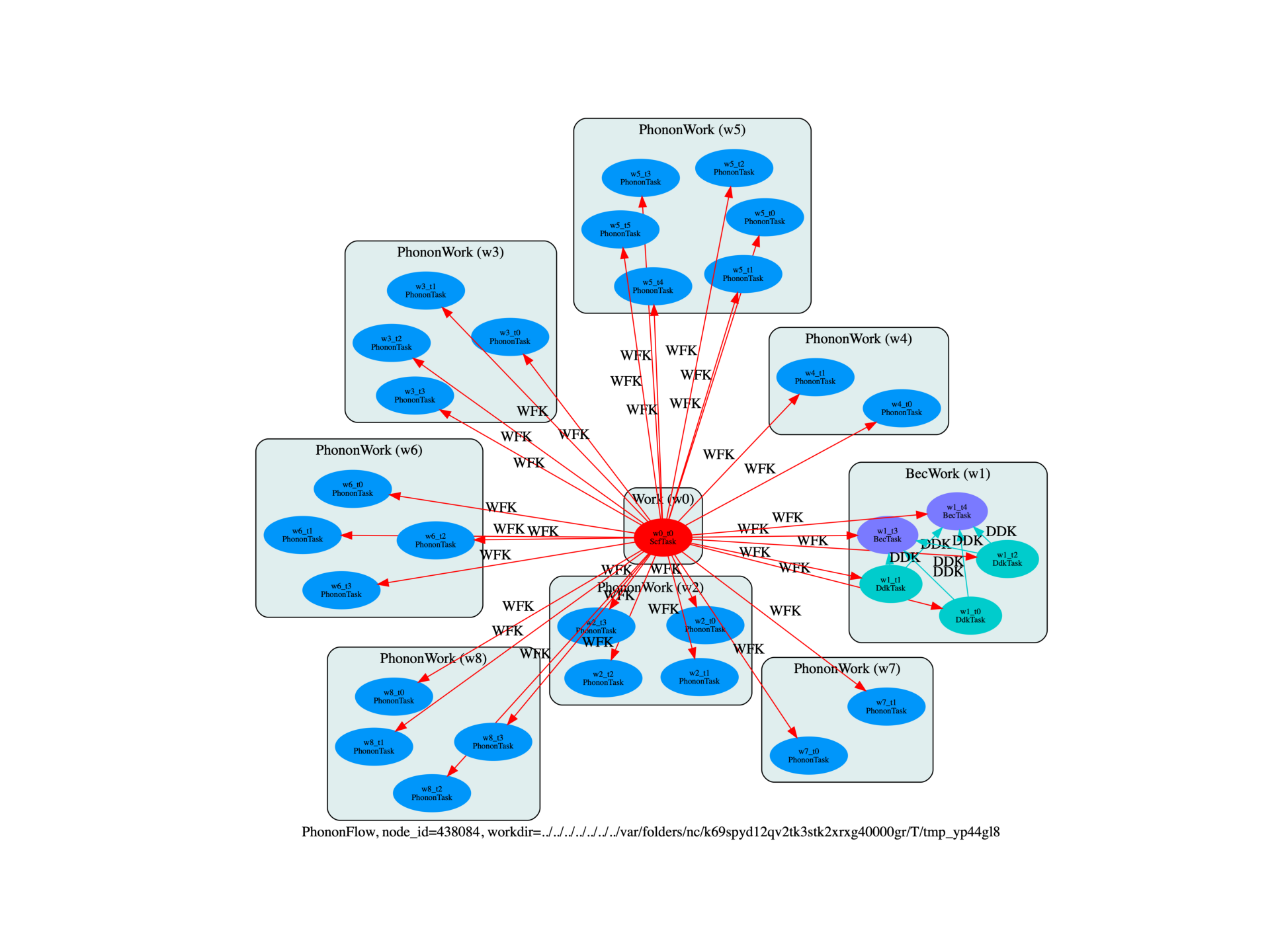Note
Go to the end to download the full example code.
Phonons with DFPT
This example shows how to compute the phonon band structure of AlAs with AbiPy flows. Symmetries are taken into account: only q-points in the IBZ are generated and for each q-point only the independent atomic perturbations are computed.
The final results (out_DDB, out_DVDB) are produced automatically at the end of the run
and saved in flow_phonons/w1/outdata/.
import sys
import os
import abipy.abilab as abilab
import abipy.data as abidata
from abipy import flowtk
def make_scf_input(paral_kgb=0):
"""
This function constructs the input file for the GS calculation:
"""
# Crystalline AlAs: computation of the second derivative of the total energy
structure = abidata.structure_from_ucell("AlAs")
pseudos = abidata.pseudos("13al.981214.fhi", "33as.pspnc")
gs_inp = abilab.AbinitInput(structure, pseudos=pseudos)
gs_inp.set_vars(
nband=4,
ecut=2.0,
ngkpt=[4, 4, 4],
nshiftk=4,
shiftk=[0.0, 0.0, 0.5, # This gives the usual fcc Monkhorst-Pack grid
0.0, 0.5, 0.0,
0.5, 0.0, 0.0,
0.5, 0.5, 0.5],
#shiftk=[0, 0, 0],
paral_kgb=paral_kgb,
tolvrs=1.0e-10,
ixc=1,
diemac=9.0,
#iomode=3,
)
return gs_inp
def build_flow(options):
"""
Create a `Flow` for phonon calculations. The flow has two works.
The first work contains a single GS task that produces the WFK file used in DFPT
Then we have multiple Works that are generated automatically
in order to compute the dynamical matrix on a [4, 4, 4] mesh.
Symmetries are taken into account: only q-points in the IBZ are generated and
for each q-point only the independent atomic perturbations are computed.
"""
# Working directory (default is the name of the script with '.py' removed and "run_" replaced by "flow_")
if not options.workdir:
options.workdir = os.path.basename(sys.argv[0]).replace(".py", "").replace("run_", "flow_")
# Build input for GS calculation
scf_input = make_scf_input()
# Create flow to compute all the independent atomic perturbations
# corresponding to a [4, 4, 4] q-mesh.
# Electric field and Born effective charges are also computed.
flow = flowtk.PhononFlow.from_scf_input(options.workdir, scf_input,
ph_ngqpt=(4, 4, 4), with_becs=True)
return flow
# This block generates the thumbnails in the AbiPy gallery.
# You can safely REMOVE this part if you are using this script for production runs.
if os.getenv("READTHEDOCS", False):
__name__ = None
import tempfile
options = flowtk.build_flow_main_parser().parse_args(["-w", tempfile.mkdtemp()])
build_flow(options).graphviz_imshow()
@flowtk.flow_main
def main(options):
"""
This is our main function that will be invoked by the script.
flow_main is a decorator implementing the command line interface.
Command line args are stored in `options`.
"""
return build_flow(options)
if __name__ == "__main__":
sys.exit(main())

Run the script with:
run_phonons.py -s
then use:
abirun.py flow_phonons history
to get the list of actions perfomed by AbiPy to complete the flow.
Note how the PhononWork has merged all the partial DDB files produced by the PhononTasks
===================================================================================================================================
====================================== <PhononWork, node_id=241274, workdir=flow_phonons/w1> ===============================
===================================================================================================================================
[Thu Dec 7 22:55:02 2017] Finalized set to True
[Thu Dec 7 22:55:02 2017] Will call mrgddb to merge [ .... ]
Now open the final DDB file with:
abiopen.py flow_phonons/w1/outdata/out_DDB
and invoke anaddb to compute the phonon band structure and the phonon DOS with:
In [1]: phbst_file, phdos_file = abifile.anaget_phbst_and_phdos_files()
In [2]: %matplotlib
In [3]: phbst_file.plot_phbands()

Total running time of the script: (0 minutes 6.510 seconds)